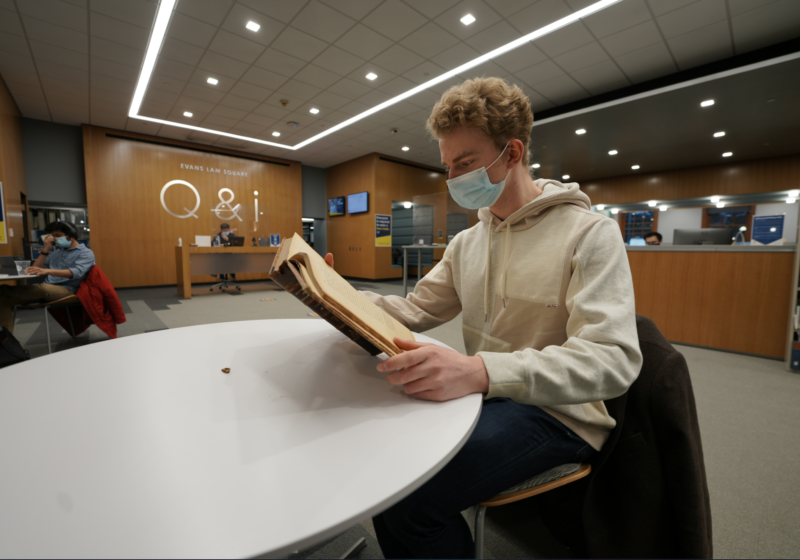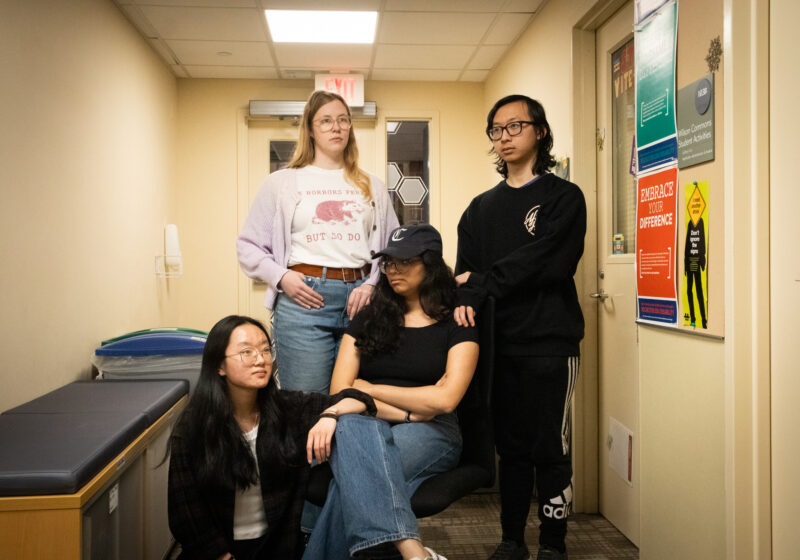This time last year, Rush Rhees was packed with students studying, collaborating, procrastinating, hosting office hours, snacking, and huddled together claiming their study-territory.
The pandemic has impacted UR’s atmosphere and study culture. The crammed tables of the past are now a risk with COVID-19’s spread. The change can be most felt in UR’s libraries, where spaces like iZone, once filled with chaos and cacophony, are now uncomfortably silent.
The River Campus Libraries staff would like nothing more than for the libraries to return to their former states. But in the face of COVID-19, the River Campus Library staff has been able to see COVID-19 not as a roadblock, but as a call for innovation.
“It’s really easy to look at things to scale back on,” Director of Service Strategies of River Campus Libraries Emily Clasper said. “But there’s an opportunity to try new things.”
New York State’s requirements and UR’s own regulations have shaped the Libraries’ approach to COVID-19.
Some spaces like the Art and Music Library are closed for the year due to poor ventilation. Food is only allowed in designated library areas, such as the Hawkins-Carlson Room. Masks must be worn at all times in accordance with NYS and UR policy, even when students are seated alone.
According to Clasper River Campus Libraries want to open more spaces, but are held back by state and university guidelines. They are closely monitoring the situation for opportunities to expand availability, and thinking of new ways to provide more seating.
“The bottom line for us is safety,” Clasper said.
To alleviate some of the seating strain, certain classrooms have been turned into study spaces, and are available on a first come basis every day after 6p.m.
Over the summer, the River Campus Library staff mathematically arranged spaces to have the maximum number of seats available with social distancing guidelines. All furniture has been coordinated to optimize compliance, and approved seats have been marked with tape and set six feet apart.
Library staff has asked that students limit their time at a space to two hours due to the limited seating capacity. In an attempt to facilitate turnover in these rooms, UR has developed a little-known website that provides real-time information about the capacity in each study space.
Clasper said that staff is aware of the want and need for student collaboration, and has talked to students about their thoughts on how to improve and create new opportunities for innovation.
“[This is] an opportunity to be creative and to listen to what our students need,” Clasper expressed.
Small whiteboards are available at the Q&i desk for students to work on problems together without crowding over a piece of paper. Larger whiteboards have been positioned in spaces like Gleason Library and iZone to allow students to collaborate safely.
A new reservation system for larger study spaces has been recently launched to have equitable access for all students. The capacity of the spaces (including, for example, the project rooms in iZone) range from two to six students, and can be reserved for one to two hours.
The pandemic has changed how River Campus Libraries operate, but River Campus Libraries’ employees have not seen it as a negative impact. Instead, Clasper said library employees see this as a chance to make UR’s study culture and habits ever better.




